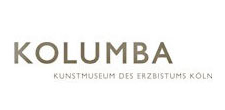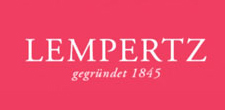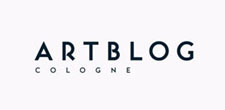EDITORIAL # 37
KULTURRAUM HOMBROICH

Hombroich ist ein Ort der Kunst, Architektur und Natur. 1987 eröffnete Karl-Heinrich Müller das Museum Insel Hombroich. Die von ihm eingerichtete Stiftung Insel Hombroich umfasst seit 1997 das Museum, das Kirkeby-Feld und die Raketenstation Hombroich. Auf der Raketenstation ist seit 2004 mit der Langen Foundation ein Privatmuseum ansässig, das neben regelmäßigen Präsentationen der Sammlung von Viktor und Marianne Langen Wechselausstellungen zur Gegenwartskunst zeigt. In unmittelbarer Nähe eröffnete der Künstler Thomas Schütte 2016 nach einem eigenen Modell die Skulpturenhalle, die für Ausstellungen zeitgenössischer Skulptur bestimmt ist. Stiftung Insel Hombroich, Langen Foundation und Thomas Schütte Stiftung agieren selbstständig und tragen mit ihren Ausstellungen und Aktivitäten auf jeweils eigene Art zur Entwicklung des Kulturraumes Hombroich bei.
Langen Foundation
Seit nunmehr sieben Jahren leite ich jetzt die Langen Foundation und finde es immer wieder inspirierend, in und mit der Architektur Tadao Andos zu arbeiten, der diesen Bau für Marianne Langen errichtet hat.
Die Sammlung, die die Stifterin gemeinsam mit ihrem Mann Viktor seit den späten 1940er Jahren zusammengetragen hat, bildete damals den Ausgangspunkt der Langen Foundation. Neben ihrer Liebe zur Malerei der klassischen Moderne und der Kunst ihrer Zeit galt das Interesse der beiden gleichermaßen der außereuropäischen Kunst, insbesondere der asiatischen. So haben sie eine der größten Privatsammlungen japanischer Kunst in Europa zusammengetragen. All das bestimmt die Ausrichtung unseres Hauses, das sich gemäß dem Erbe der Langens dem Dialog der Kulturen des Ostens und Westens ebenso widmet, wie der Auseinandersetzung mit der Gegenwartskunst.
Neben monografischen Ausstellungen jüngerer Künstlerinnen und Künstler im Japanraum und Präsentationen aus der Sammlung bilden ortsund raumbezogene Ausstellungen einen Schwerpunkt unseres Programms. So haben sowohl Pae White als auch Otto Piene eigens neue Installationen für die Räume unseres Hauses entwickelt und das spannungsvolle Verhältnis von Innen und Außen, das sich in unserer Architektur abbildet, klingt an in den Ausstellungen von Richard Deacon oder Olafur Eliasson. Eine weitere Auseinandersetzung mit unseren Räumen stellt die aktuelle Ausstellung Limbo des Künstlerduos FORT dar.
Christiane Maria Schneider, September 2017



Die Skulpturenhalle Neuss
Die Skulpturenhalle der Thomas Schütte Stiftung ist der bisher größte und ambitionierteste Bau, der nach einem Modell von Thomas Schütte erstellt wurde. Es handelt sich um einen großen, nicht unterteilten Ausstellungsraum für Skulpturen, der von oben belichtet ist. Auf die Außenwand aus Beton sind Holzlamellen aufgebracht, welche die große Fläche gliedern. In ihrem Zentrum birgt die Halle einen kleineren, intimen Ausstellungsraum, dessen äußere Form mit Backsteinverkleidung ihm seinen besonderen Charakter verleiht. In einem eigenen Gebäude sind Kasse, Bibliothek und das Kuratorenbüro untergebracht, das durch einen schornsteinartigen Lichtschacht hervorgehoben wird.
In der Skulpturenhalle finden jährlich zwei Ausstellungen statt; während der Wintermonate ist für kurze Zeit Pause. Das Ausstellungsprogramm wird von Thomas Schütte und Dieter Schwarz besprochen und geplant. Organisiert werden die Ausstellungen von Thomas Schütte und seinen Mitarbeitern; Dieter Schwarz ist Kurator und für die Katalogtexte verantwortlich. Die Auswahl der Künstler und Künstlerinnen geht aus vom Interesse an ihrer Arbeit, und besondere Aufmerksamkeit gilt dem, was längere Zeit nicht mehr zu sehen war. Zwar ist es nicht Aufgabe der Skulpturenhalle, wie ein Museum die Geschichte der Skulptur aufzuarbeiten, doch können durchaus auch verstorbene Künstler und Künstlerinnen ausgestellt werden.
Begonnen haben die Ausstellungen mit Mario Merz, es folgte Richard Deacon, 2017 Paloma Varga Weisz. Gegenwärtig wird ein konzentrierter Überblick über Anthony Caros Werk gezeigt – von den ersten abstrakten Skulpturen bis zu späten Arbeiten, darunter auch zwei Außenskulpturen. Geplant sind für die nächsten Jahre Ausstellungen von Bernd Lohaus und Matt Mullican, weitere Projekte sind noch nicht spruchreif. Dazwischen bringt Thomas Schütte für Kurzausstellungen eigene Werke aus dem Lager im Untergeschoss in die Halle.



Stiftung Insel Hombroich
Fotografische Inkunabeln aus der Sammlung Kahmen II
Räume für Fotografie, Siza Pavillon, 2017/2018
Die zweiteilige Ausstellung Fotografische Inkunabeln aus der Sammlung Kahmen I+II gibt einen Einblick in die bedeutende Sammlung von Volker Kahmen. Bildeten im ersten Teil der Ausstellung Pioniere der Fotografie einen Schwerpunkt, sind im zweiten neben einzelnen Positionen dieser frühen Fotografie – Hugo Erfurth, Otto Steinert, Wols – vor allem Vertreter der jüngeren Fotografiegeschichte zu sehen: Pidder Auberger, Cécile Bauer, Frank Gaudlitz, Ulrich Wüst und andere.
Drei Kapellen, Kirkeby-Feld, 2017/2018
Die Drei Kapellen (2003), ein vom Maler und Bildhauer Per Kirkeby konzipiertes Ensemble begehbarer Backstein-Skulpturen, beleuchten derzeit unterschiedliche Aspekte zeitgenössischer Kunst: Eine der Kapellen ist Per Kirkeby gewidmet, eine weitere zeigt die Fotoinstallation Sonnenstand (1991) von Ursula Schulz-Dornburg; die dritte Kapelle bietet mit der Ausstellung Bruno Goller und Positionen zeitgenössischer Künstler Einblicke in die Sammlung Kahmen.
Museum Insel Hombroich: Kunst parallel zur Natur
Das Motto von Museum Insel Hombroich, entstanden in Anlehnung an eine Äußerung von Paul Cézanne, Kunst sei eine Harmonie parallel zur Natur, kennzeichnet den Entwurf eines musealen und landschaftlichen Idealraums. Der Sammler und Museumsgründer Karl-Heinrich Müller entwickelte ihn gemeinsam mit den Künstlern Gotthard Graubner (Sammlungsinstallation) und Erwin Heerich (begehbare Skulpturen) sowie dem Landschaftsplaner Bernhard Korte (Landschaft) zur Präsentation seiner bedeutenden Kunstsammlung.
Künstler in Hombroich
Im Museum Insel Hombroich und auf der Raketenstation Hombroich leben und arbeiten Künstler, die vom Stiftungsgründer auf Lebenszeit dazu eingeladen wurden. Jedes Jahr verbringen weitere Künstler Arbeitsaufenthalte im Gastatelier auf der Raketenstation Hombroich. Biennal wird im Rahmen der Hombroich: Summer Fellows eine Gruppe von Künstlern und Wissenschaftlern nach Hombroich eingeladen.
Programme
Die Stiftung Insel Hombroich als Institution und Künstler in Hombroich entwickeln seit jeher Initiativen in den Bereichen Kunst, Literatur, Musik, Philosophie, Architektur, Wissenschaft und Natur. Auf der Raketenstation Hombroich und im Kirkeby-Feld werden Ausstellungen in den Bereichen Bildende Kunst und Architektur eingerichtet. In den vergangenen Jahren wurden so die Architekten Álvaro Siza und Eduardo Souto de Moura sowie die Künstler Erwin Heerich, Bruno Goller, Thomas Demand, Markus Karstieß und Yuri Ancarani gezeigt. In den Räumen für Fotografie im Siza Pavillon werden klassische wie zeitgenössische Positionen der Fotografie präsentiert.

Hombroich is a site of art, architecture, and nature. Karl-Heinrich Müller established the Musuem Insel Hombroich In 1987, and the foundation that he founded, Insel Hombroich, has encompassed the museum, the Kirekeby-Feld, and the Raketenstation Hombroich since 1997. A private museum with the Langen Foundaiton has been located on the former missile base since 2004. In addition to regular presentations of the collection of Viktor and Marianne Langen, it also displays changing exhibitions of contemporary art. In the immediate vicinity, the artist Thomas Schütte opened a sculpture hall of his own design in 2016, which is intended for exhibitions of contemporary sculpture. The Stiftung Insel Hombroich, Langen Foundation, and the Thomas Schütte Stiftung operate independently, and each makes their own unique contribution to the development of the cultural space of Hombroich with their exhibitions and activities.
Langen Foundation
For seven years now, I have directed the Langen Foundation and have always found it inspiring to work in and with the architecture of Tadao Ando, who erected this building for Marianne Langen.
The collection that the founder had been assembling with her husband Viktor since the forties formed the starting point of the Langen Foundation. Along with their love for classical Modernist painting and the art of their moment, they equally shared an interest in non-European art, particularly that of Asia. So they assembled the largest private collection of Japanese art in Europe. All of this informs the direction of our house, which, in accordance with the legacy of the Langens, dedicates itself to a dialogue between the cultures of the East and the West as well as an engagement with contemporary art.
In addition to monographic exhibitions of young artists in the Japan Room and presentations of the collection, site-specific exhibitions make up a main focus of the program. Both Pae White and Otto Piene have each developed new installations for the building’s rooms, and the intriguing relation between interior and exterior, which figures prominently in our architecture, also resonates through the exhibitions of Richard Deacon and Olafur Eliasson. The current exhibition Limbo by the artist duo FORT presents a further interaction with our spaces.
Christiane Maria Schneider, September 2017


The Skulpturenhalle Neuss
The Thomas Schütte Stiftung’s sculpture hall is the largest and most ambitious construction based on a design by Thomas Schütte created up to this point. It involves a large undivided sculpture exhibition space, which is lit from above. Wooden slats are applied to the concrete facade, structuring the large surface. At its center, the hall contains a small, intimate exhibition space, whose brick-lined outer form lends it an exceptional character. A checkout, library, and curatorial office are housed in their own building, highlighted by chimney-like shafts of light.
Two exhibitions take place every year in the sculpture hall with a short break during the winter months. The exhibition program is planned and reviewed by Thomas Schütte and Dieter Schwarz. Thomas Schütte and his employees organize the exhibitions; Dieter Schwarz is the curator and responsible for catalogue texts. The selection of artists derives from an interest in their work with particular attention paid to that which has not been seen in a long time. The task of the sculpture hall, unlike a museum, is not to establish the history of sculpture, although deceased artists certainly may also be exhibited.
The exhibitions began with Mario Merz, followed by Richard Deacon, and in 2017 Paloma Varga Weisz. Currently on display is a concentrated overview of Anthony Caro’s work—from the first abstract sculptures to the late works, including two outdoor works. Exhibitions of Bernd Lohaus and Matt Mullican are planned for the coming years and further projects are still in their early stages. In between exhibitions, Thomas Schütte often brings his own work into the main hall from the basement storage space for short presentations.


Stiftung Insel Hombroich
Photographic Incunabulum from the Kahmen II Collection
Rooms for Photography, Siza Pavillon, 2017/2018
The two-part exhibition Incunabulas from the Kahmen Collection I+II offers a view into Volker Kahmen’s distinguished collection. The first part of the exhibition is devoted to the pioneers of photography. The second part presents individual positions from this earlier period of photography—Hugo Erfurth, Otto Steinert, Wols—alongside representatives of more recent developments in the history of photography: Pidder Auberger, Cécile Bauer, Frank Gaudlitz, and Ulrich Wüst among others.
Three Chapels, Kirkeby-Feld, 2017/2018
The Drei Kapellen (2003), an ensemble of accessible brick sculptures conceived by painter and sculptor Per Kirkeby, cast light on diverse aspects of contemporary art: one of the chapels is devoted to Per Kirkeby; another exhibits the photo installation Sonnenstand (1991) by Ursula Schulz-Dornburg; the third chapel offers insights into the Kahmen Collection with the exhibition Bruno Goller und Positionen zeitgenössischer Künstler (Bruno Goller and Positions of a Contemoprary Artist).
Museum Insel Hombroich: Kunst parallel zu Natur (Art parallels nature)
The Museum Insel Hobroich’s motto, “art is a harmony that parallels nature,” borrowed from a remark made by Paul Cézanne, aptly characterizes the concept of an ideal space for both landscape and museum presentation. Collector and museum founder Karl-Heinrich Müller developed the museum in collaboration with the artists Gotthard Graubner (collection installation) and Erwin Heerich (accessible sculptures) as well as the landscape architect Bernhard Korte (landscape) for the presentation of his distinguished collection.
Artists in Hombroich
Invited for life by the foundation’s founder, several artists live and work at the Museum Insel Hombroich and at the Raketenstation Hombroich. Each year more artists take part in a work-stay program in the guest studio at the Raketenstation Hombroich. Every two years, a group of artists and academics is invited to Hombroich as part of the Hombroich: Summer Fellows program.
Programs
Both the Stiftung Insel Hombroich as an institution as well as the artists in Hombroich have long since been involved in developing initiatives in the areas of art, literature, music, philosophy, architecture, science, and nature. Exhibitions in the fields of visual art and architecture are regularly organized at the Raketenstation Hombroich and the Kirkeby-Feld. In the past years, the architects Álvaro Siza and Eduardo Souto de Moura as well as the artists Erwin Heerich, Bruno Goller, Thomas Demand, Markus Karstieß, and Yuri Ancarani have been exhibited. Both classical and contemporary positions in photography are presented in the rooms for photography at the Siza Pavillon.








